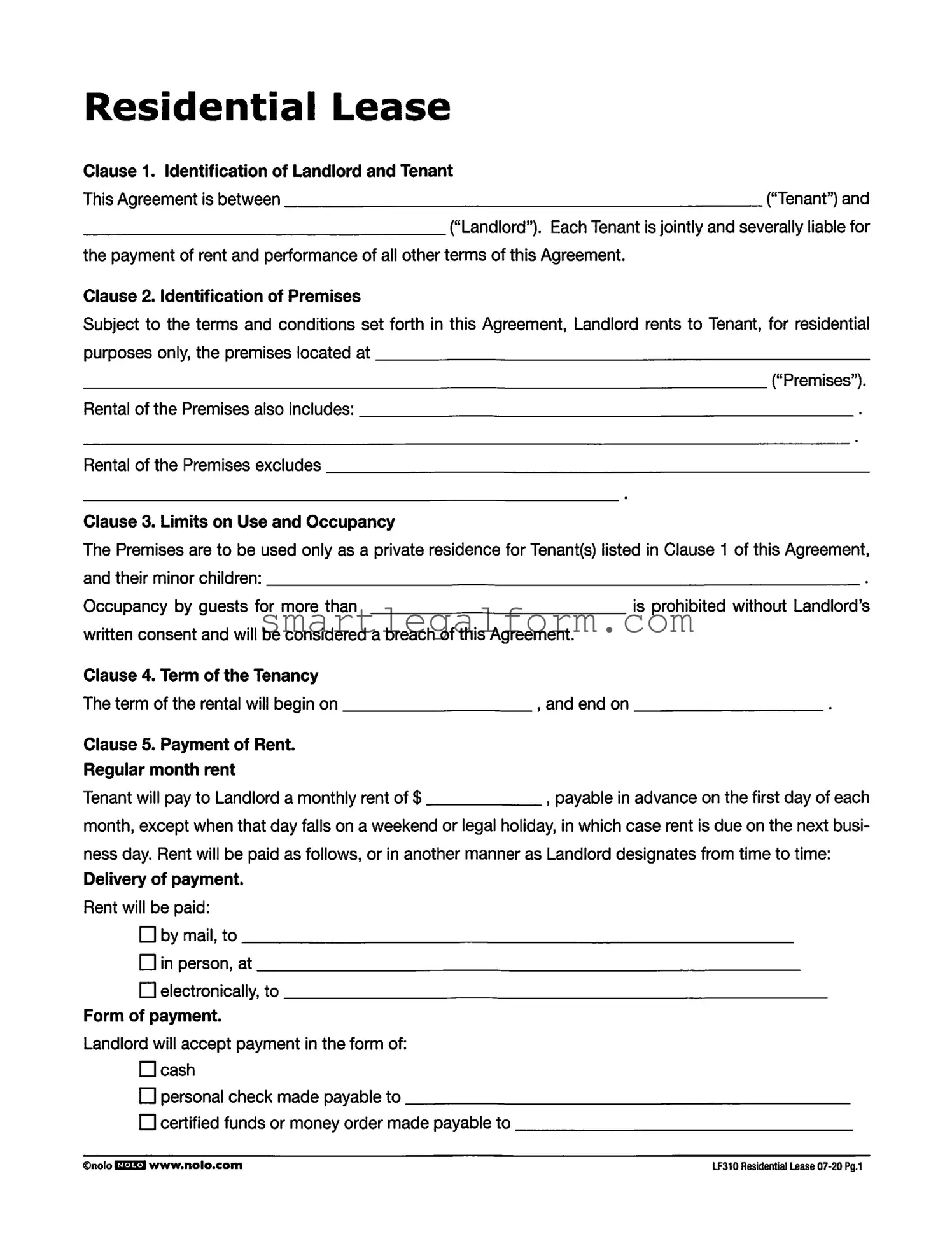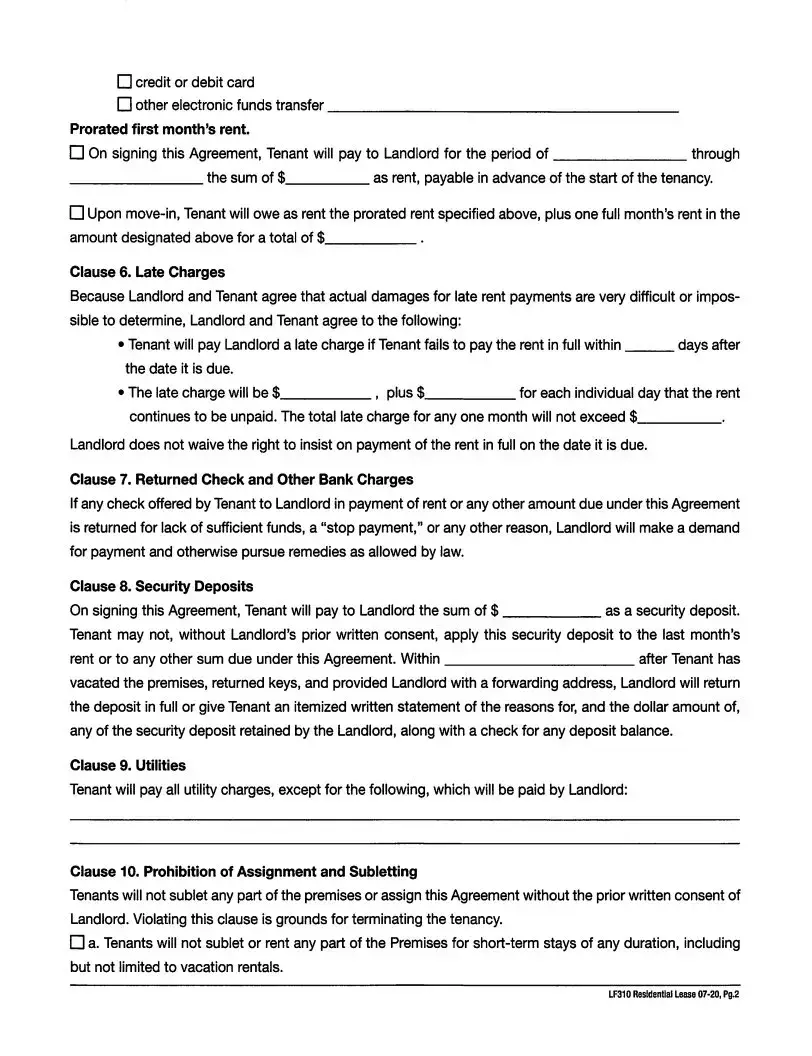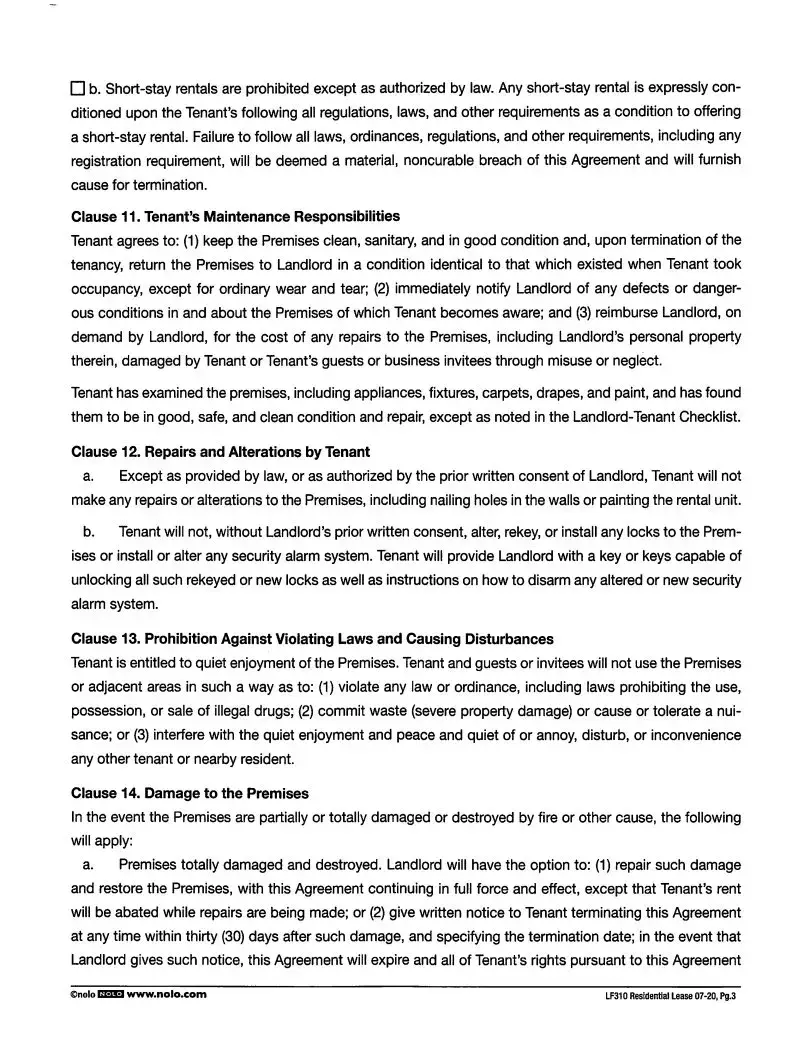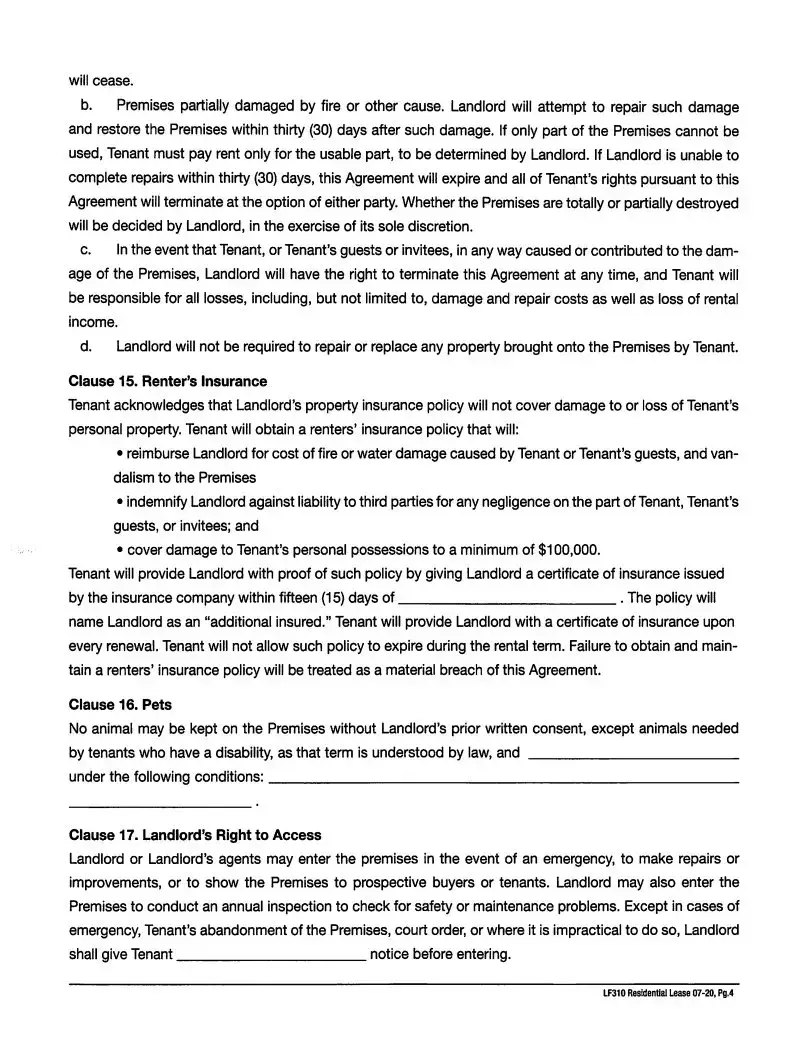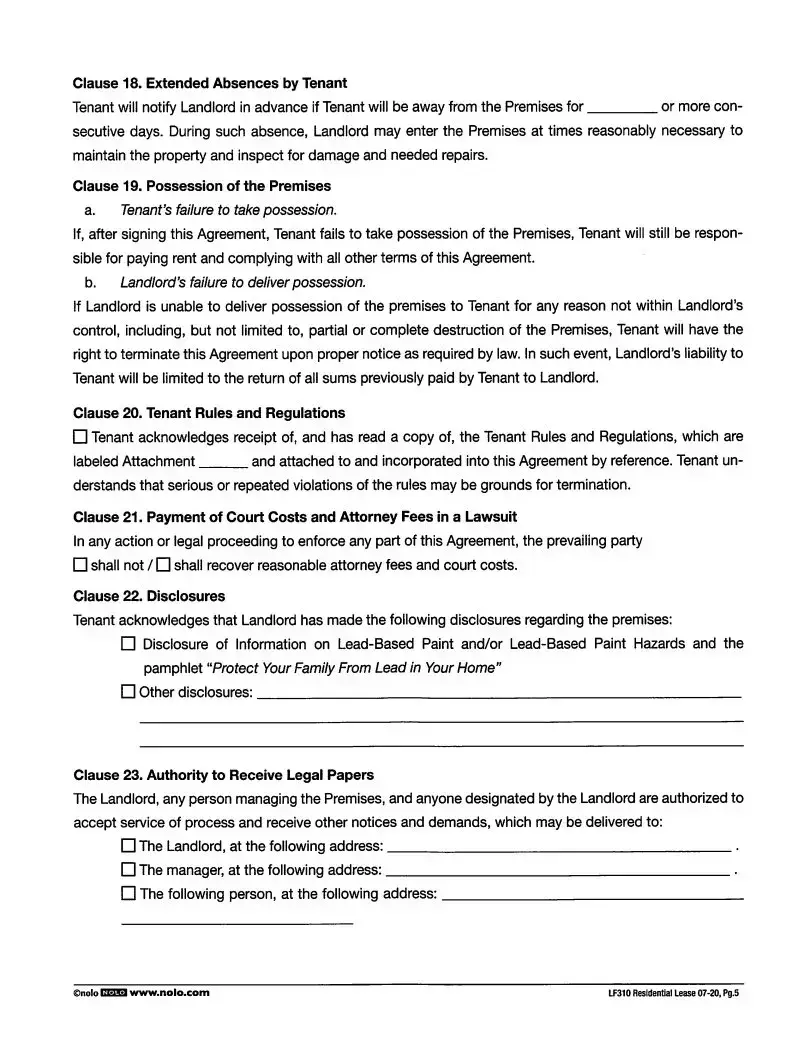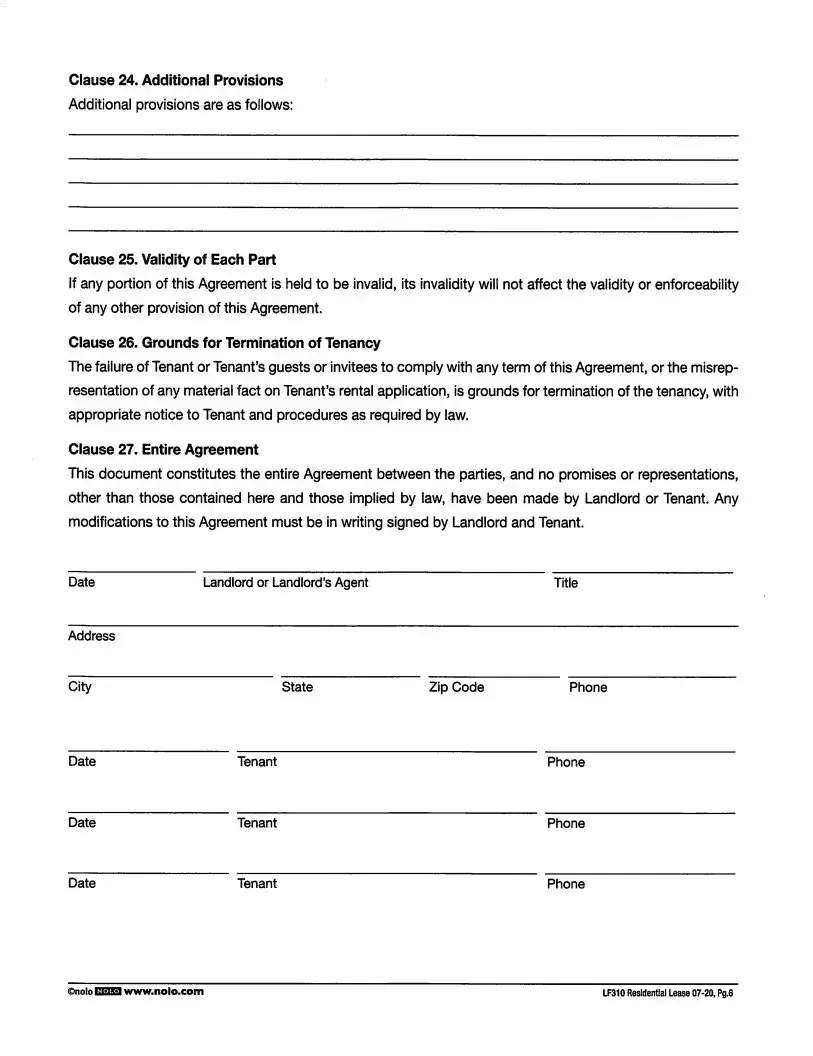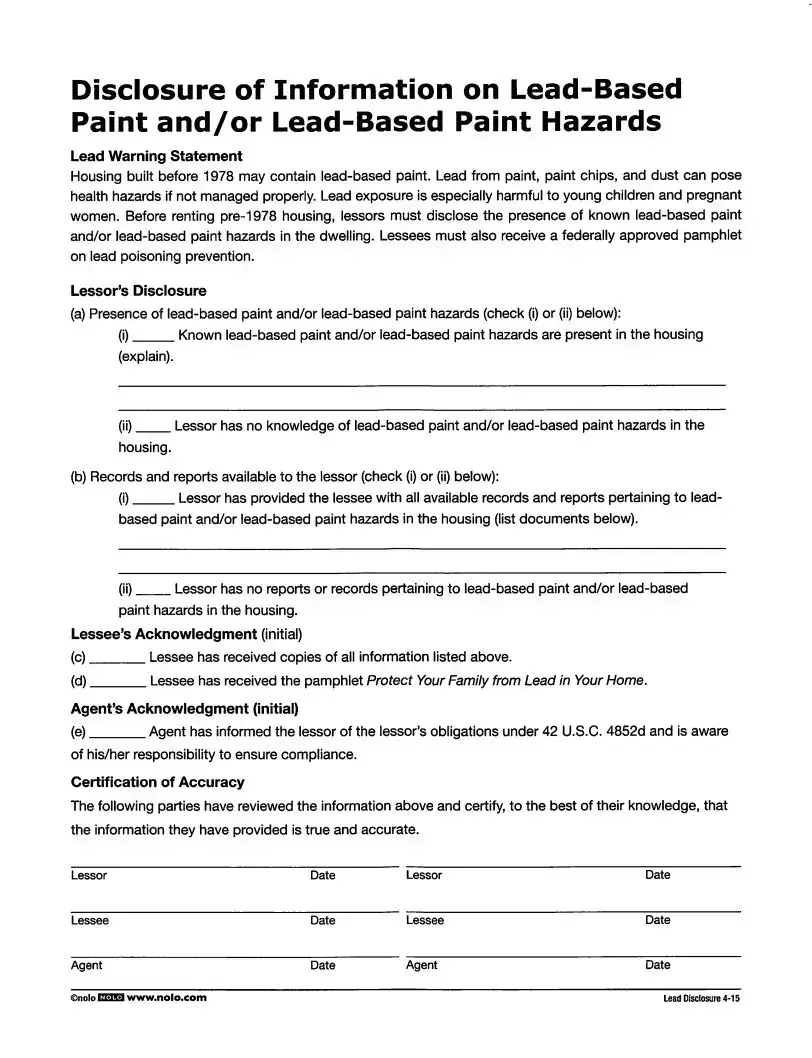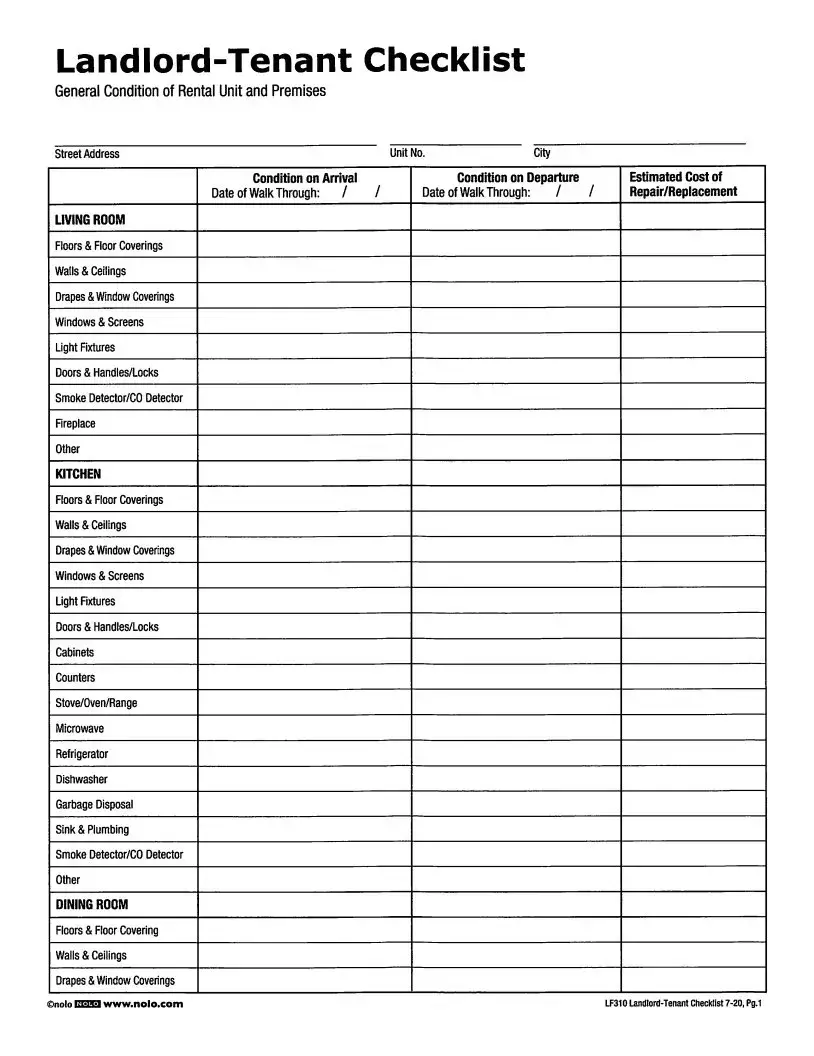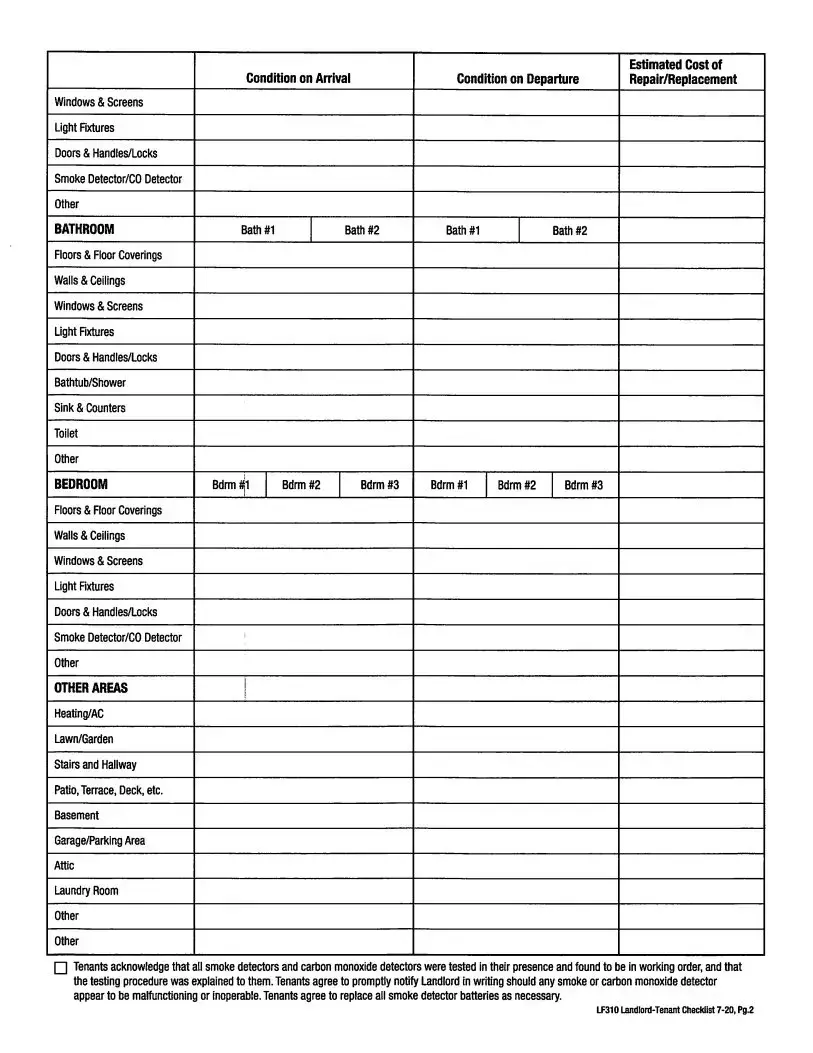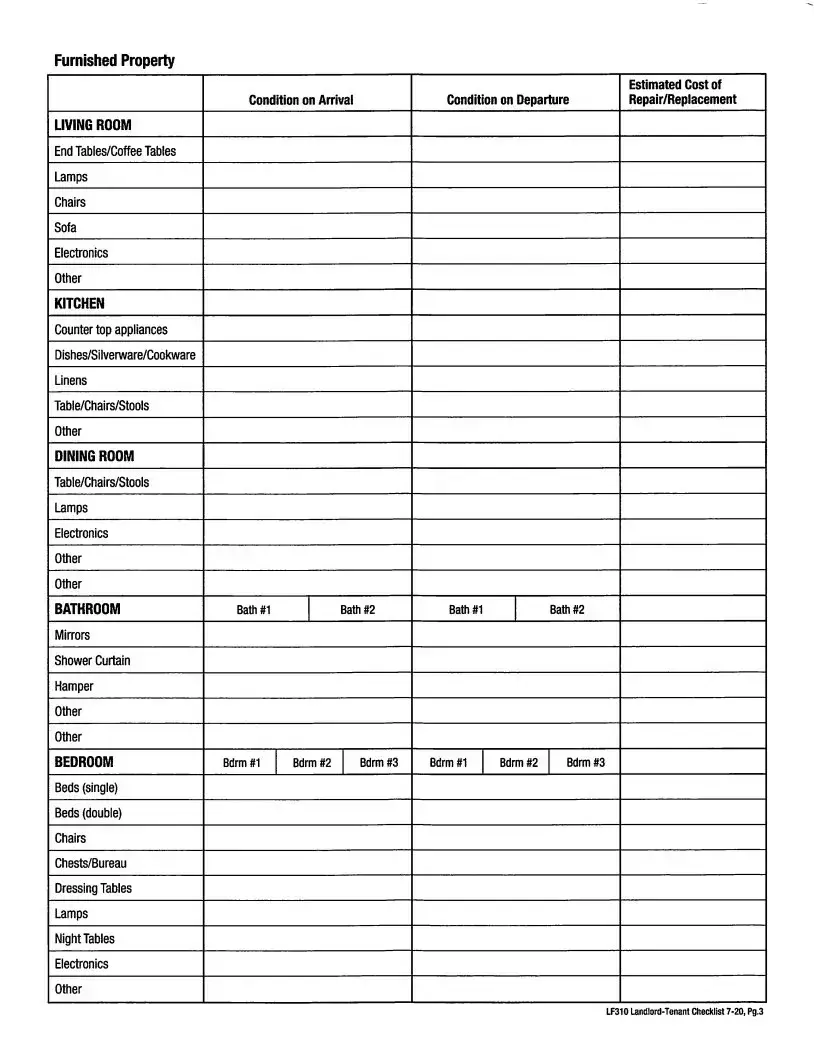Filling out the LF310 Residential Lease form requires careful attention to detail. Many individuals make common mistakes that can lead to misunderstandings or disputes later on. One frequent error is failing to properly identify the Landlord and Tenant. Each party's full name should be clearly stated in Clause 1. Omitting this information can create confusion about who is legally responsible under the lease.
Another mistake often seen is leaving the Premises location blank in Clause 2. This crucial detail must be filled out to ensure that both parties know exactly what property is being rented. Without this information, it can be challenging to enforce any terms of the lease.
Many tenants also overlook the importance of specifying the term of the tenancy in Clause 4. Not indicating the start and end dates can lead to assumptions that may not align with the intentions of both parties. It is vital to clearly define the duration of the lease to avoid any ambiguity.
In Clause 5, the payment details can often be a source of error. Tenants sometimes forget to include the correct amount of monthly rent or fail to specify the method of payment. This can lead to complications in fulfilling payment obligations. Always ensure that the rent amount and payment method are clearly stated to avoid confusion.
Another common oversight involves the late charges outlined in Clause 6. Tenants may neglect to fill in the number of days after which a late fee will apply, or they might not specify the amount of the late charge. This can result in unexpected fees and disputes over what constitutes a late payment.
In Clause 8, the handling of the security deposit is often misunderstood. Some tenants mistakenly believe they can apply the security deposit toward their last month’s rent without written consent from the landlord. This misunderstanding can lead to legal issues, as it is typically against the terms of the lease.
Utility payments are another area where mistakes can occur. Tenants sometimes fail to clarify which utilities they are responsible for in Clause 9. Leaving this section incomplete can lead to disputes about who pays for what, potentially resulting in service interruptions.
Finally, the prohibition of assignment and subletting in Clause 10 is often overlooked. Some tenants may not realize that they cannot sublet or assign the lease without the landlord's written consent. Violating this clause can be grounds for terminating the lease, so it’s crucial to understand and adhere to this requirement.
By being mindful of these common mistakes, tenants can ensure a smoother leasing process and foster a better relationship with their landlord. Attention to detail in filling out the LF310 Residential Lease form is essential for protecting everyone involved.
